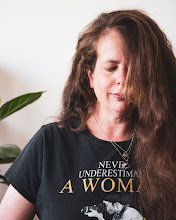Well, I really don't try to educate anyone by writing here, but there was something few minutes ago that made want to educate for a moment:
There are two flamenco groups in Facebook which are kind of in an internal contest - one is the group I opened, the other one was opened by the "great dancer" from Be'er Sheva. Mine is open to flamenco lovers around the world. The other one made for Israelis only - pro flamencos is better.
Someone wrote the same question in both groups two hours ago or so. I didn't see it cause I wasn't around my computer for few hours and I'm not connected to internet through my mobile phone (how old style). In the other group he received some answers that he didn't like. In mine... He had to wait till I'll come.
The question: does sevillanas are flamenco or not? Does it count as part or not? If it isn't - does it because of fights? My answer - it's a part of flamenco, it grew up from flamenco, but it isn't "pure" flamenco. It's a part which comes from Sevilla (because of it comes the name), and to the Feria de Abril. Still it includes many types from something which is close to the real flamenco to something which remind Clasico Español.
He didn't like my answer. He thought that I say it because of jealousy (what's the connection?). He said that a long time ago Paco de Lucia didn't count as pure flamenco. There is a big difference. Paco de Lucia is someone who made something modern to his time and changed the way flamenco is now. Sevillanas.... Other palos (the "beats" of flamenco) started in certain cities and grew up and became a part of whole flamenco in all other cities of Andalucia. Sevillanas are something which grew up in Sevilla with the solea. Unlike the solea - the sevillanas are still a part of Sevilla and Feria de Abril. It's rare to see dancers do it as a part of show. If it's a part of a show - it's REALLY rare and takes a little part of it.
Maybe I'm not a pro dancer, but I learn long enough (include sevillanas), I do my best to learn the history (Neta is a great teacher for that), I watch a lot flamenco in youtube and live shows, I listen to the music.... Even without being a pro - I learn and see long enough and try to know the best which is possible. If I say it's only a part which doesn't count the whole thing - I mean it
There are two flamenco groups in Facebook which are kind of in an internal contest - one is the group I opened, the other one was opened by the "great dancer" from Be'er Sheva. Mine is open to flamenco lovers around the world. The other one made for Israelis only - pro flamencos is better.
Someone wrote the same question in both groups two hours ago or so. I didn't see it cause I wasn't around my computer for few hours and I'm not connected to internet through my mobile phone (how old style). In the other group he received some answers that he didn't like. In mine... He had to wait till I'll come.
The question: does sevillanas are flamenco or not? Does it count as part or not? If it isn't - does it because of fights? My answer - it's a part of flamenco, it grew up from flamenco, but it isn't "pure" flamenco. It's a part which comes from Sevilla (because of it comes the name), and to the Feria de Abril. Still it includes many types from something which is close to the real flamenco to something which remind Clasico Español.
He didn't like my answer. He thought that I say it because of jealousy (what's the connection?). He said that a long time ago Paco de Lucia didn't count as pure flamenco. There is a big difference. Paco de Lucia is someone who made something modern to his time and changed the way flamenco is now. Sevillanas.... Other palos (the "beats" of flamenco) started in certain cities and grew up and became a part of whole flamenco in all other cities of Andalucia. Sevillanas are something which grew up in Sevilla with the solea. Unlike the solea - the sevillanas are still a part of Sevilla and Feria de Abril. It's rare to see dancers do it as a part of show. If it's a part of a show - it's REALLY rare and takes a little part of it.
Maybe I'm not a pro dancer, but I learn long enough (include sevillanas), I do my best to learn the history (Neta is a great teacher for that), I watch a lot flamenco in youtube and live shows, I listen to the music.... Even without being a pro - I learn and see long enough and try to know the best which is possible. If I say it's only a part which doesn't count the whole thing - I mean it



No comments:
Post a Comment